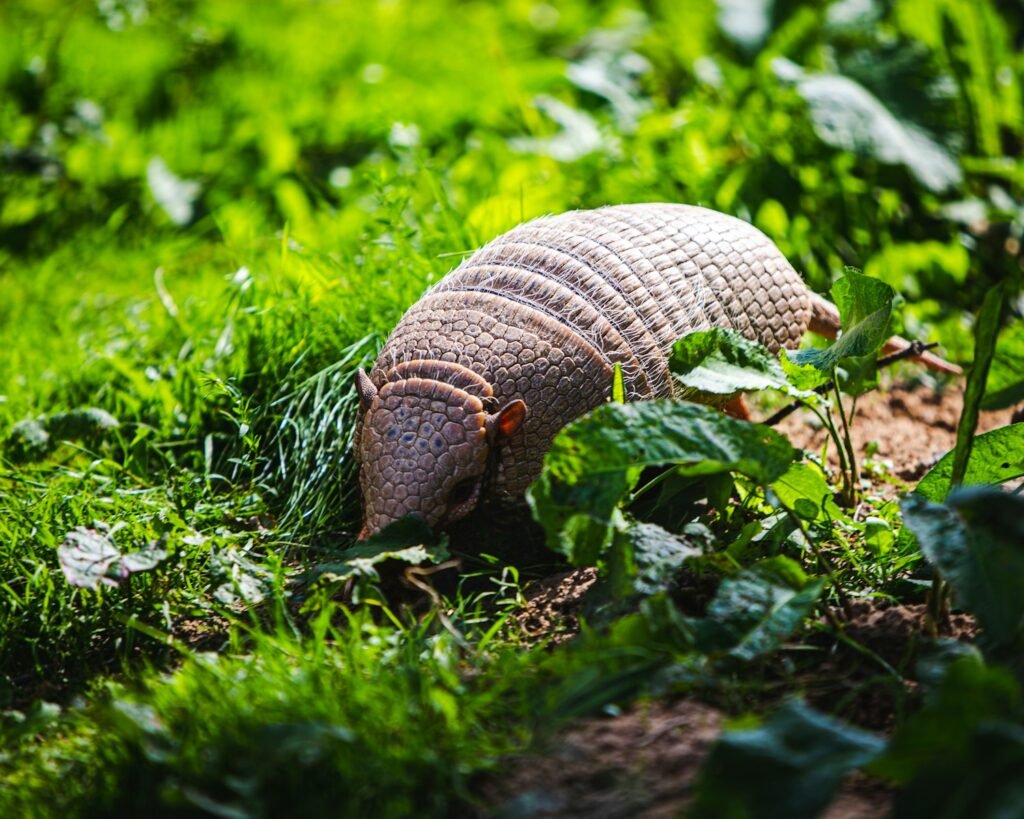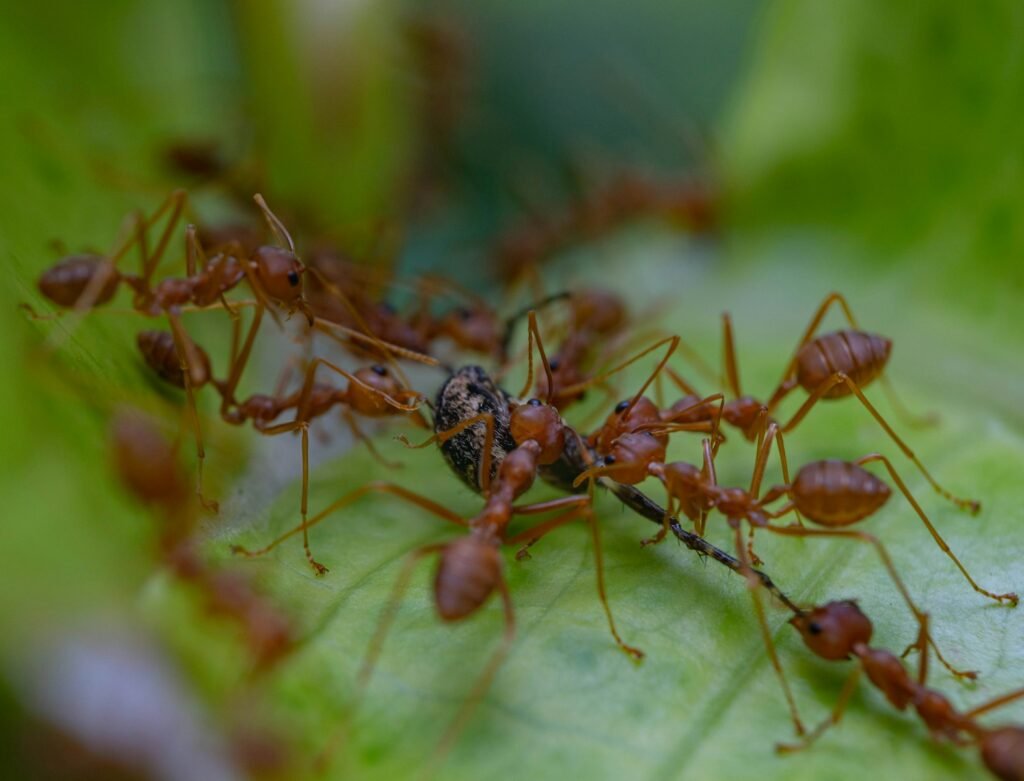On moonlit roads across the central United States, a small armored shape now appears where it once didn’t belong. The nine-banded armadillo, a heat-loving drifter from the south, is pushing into cooler counties and surprising residents who wake to find neat, conical divots peppering lawns. This quiet advance is more than a quirky wildlife story; it’s a living map of a warming climate, traced in paw prints and roadside sightings. Biologists are watching closely because the animal’s march reveals how temperature, soil, and human neighborhoods intertwine to create new habitats. The mystery is not if armadillos will keep moving, but how far and how fast they will go.
The Hidden Clues

The first hints of expansion rarely come from lab instruments but from everyday life: a garden torn up overnight, an unexpected shape on a trail camera, a new silhouette in the headlights. I still remember my own first encounter along a prairie edge, that improbable shell clicking softly through fallen leaves like a wind-up toy. Those small surprises accumulate into patterns, and patterns become evidence that scientists can test against climate records and habitat models.
What seems like a string of anecdotes is actually a robust dataset when multiplied by community science reports, wildlife-recovery logs, and roadkill records. Armadillos leave unmistakable signs – burrows, soil plugs, and foraged patches – that make them easier to document than many shy mammals. The result is a living atlas that changes month by month, revealing corridors along river valleys, forest edges, and suburban greenbelts where warmer soils give them a foothold.
From Ancient Tools to Modern Science

Armadillos are products of deep time, part of a lineage that crossed into North America long after the last ice sheets retreated. They travel light on energy, with a low metabolic rate, and defend themselves with bone-studded armor that looks almost medieval. That physiology once tethered them to mild climates, where hard freezes were uncommon and insect prey remained active.
Modern science has added nuance to that story. Genetic studies and field observations show a generalist feeder that can exploit beetles, ants, and grubs in a wide range of disturbed habitats, from pasture margins to utility easements. Their famously identical quadruplet births mean a single pregnant female can seed a new pocket of habitat, while their ability to float or walk underwater lets them cross rivers that would stop other small mammals.
What Warmer Winters Really Do

Climate change doesn’t simply raise air temperatures; it reshapes the seasons in ways animals feel underfoot. Milder winters shorten the stretch of hard freezes, leaving soils softer for digging and saving small insect populations from deep-cold die-offs. Spring arrives earlier, extending the foraging window and making suburban lawns and compost piles rich buffets.
Snow cover matters too, acting like a blanket that can either protect or punish depending on timing and depth. Armadillos struggle when repeated cold snaps lock the ground and food becomes inaccessible, but they thrive when freeze-thaw cycles are gentler and shorter. In that narrower band of winter stress, they can push north, test their limits, and hold ground where a generation ago they would have faltered.
The Range Map, Redrawn

Historically anchored in the southern United States and the Gulf Coast, nine-banded armadillos now appear across parts of the Midwest, with some records extending into the southern portions of Great Lakes states, with records steadily filling in. River systems act like conveyor belts, guiding them along bottomland forests and riparian parks that soften local climates. Roads and rail corridors, oddly enough, also help by connecting fragmented green spaces and providing easy travel routes.
Wildlife staff increasingly verify new county records using photos, carcass reports, and DNA from tissue samples. The line on the map, once wavy and hesitant, has grown teeth – pushing into new counties, skipping others, and then backfilling as populations establish. It’s a dynamic frontier that shifts with each warm winter, each mild March, and each human-made landscape that offers food, cover, and surprisingly safe passage.
Why It Matters

Armadillos are living indicators that climate thresholds have moved, and that carries ecological consequences. Their digging aerates soil and can boost nutrient cycling, a small gift to plant roots and microbes, yet it can also disturb ground-nesting wildlife when populations climb. Gardeners and golfers may grumble about divots, but biologists also watch for interactions with native amphibians, reptiles, and invertebrates that share the same damp, diggable patches.
Public health enters the conversation, carefully and with context. Armadillos can carry pathogens that rarely reach people, and risk is lowest when animals are left alone and carcasses handled with protection. The broader lesson is about coexistence: how we design yards, manage compost, and secure pet food can tip the balance between nuisance and neighbor. In that sense, this species becomes a test case for a warmer nation learning to live with new arrivals.
Global Perspectives

armadillos are part of a worldwide shuffle as species follow shifting isotherms, just as many birds, insects, and plants are doing. Ecologists now compare range edges like historians compare borders – where change, conflict, and opportunity all collide. In Europe and Asia, butterflies and ticks are moving upslope and poleward; in North America, opossums and certain songbirds have traced similar arcs.
These parallel stories matter because they reveal which traits favor successful expansion: flexible diets, tolerance for human landscapes, and the ability to move along rivers, roads, and hedgerows. Armadillos fit that bill, and their progress helps scientists test models that predict future winners and losers. Each new data point tightens those forecasts, making it easier to target conservation where it will count most.
The Future Landscape

Projecting forward, researchers expect armadillo gains where winters stay milder, soils remain workable, and insect food persists deep into the shoulder seasons. Urban heat islands may act as stepping-stones, letting small populations survive cold spells and radiate outward during favorable years. At the same time, occasional Arctic blasts will still set limits, pruning the frontier and reminding us that climate is a long-term average with short, sometimes brutal swings.
Emerging tools – machine-learning models, high-resolution soil-temperature maps, and automated acoustic or thermal sensors – will refine our sense of where the species goes next. The most plausible near-term scenario is a patchwork expansion, not a uniform wave, with river corridors and cities acting as beachheads. How communities respond will determine whether conflicts spike or remain manageable in a warming, more armadillo-friendly world.
Call to Action

Start local: document sightings with clear photos, submit them to your state wildlife agency or a reputable community science platform, and note the habitat and date. If digging becomes a problem, reduce attractants by managing grub-rich lawns, securing compost, and removing open pet food, choosing humane deterrents over harmful traps. On roads, slow down near culverts and creek crossings at dusk, where small mammals often travel.
Support research and habitat planning by backing urban tree canopy projects, riparian restoration, and soil-health initiatives that make ecosystems more resilient for all species, not just the charismatic or the familiar. Push for climate-smart policies that cut emissions and protect green corridors, because the fate of armadillos is tied to the same forces reshaping our communities. As this armored newcomer tests the boundaries of a warming continent, the real question is simple: how will we choose to meet it?

Suhail Ahmed is a passionate digital professional and nature enthusiast with over 8 years of experience in content strategy, SEO, web development, and digital operations. Alongside his freelance journey, Suhail actively contributes to nature and wildlife platforms like Discover Wildlife, where he channels his curiosity for the planet into engaging, educational storytelling.
With a strong background in managing digital ecosystems — from ecommerce stores and WordPress websites to social media and automation — Suhail merges technical precision with creative insight. His content reflects a rare balance: SEO-friendly yet deeply human, data-informed yet emotionally resonant.
Driven by a love for discovery and storytelling, Suhail believes in using digital platforms to amplify causes that matter — especially those protecting Earth’s biodiversity and inspiring sustainable living. Whether he’s managing online projects or crafting wildlife content, his goal remains the same: to inform, inspire, and leave a positive digital footprint.




